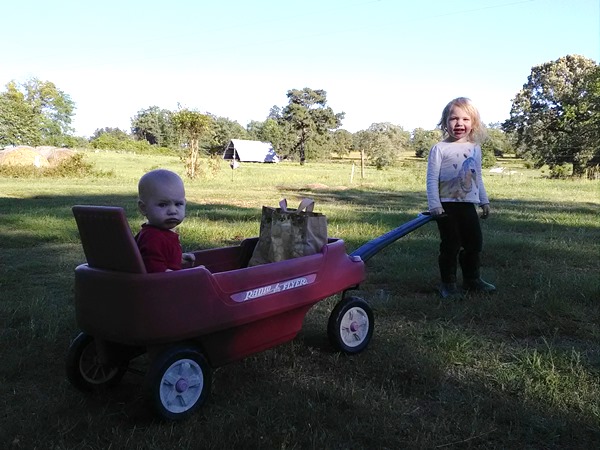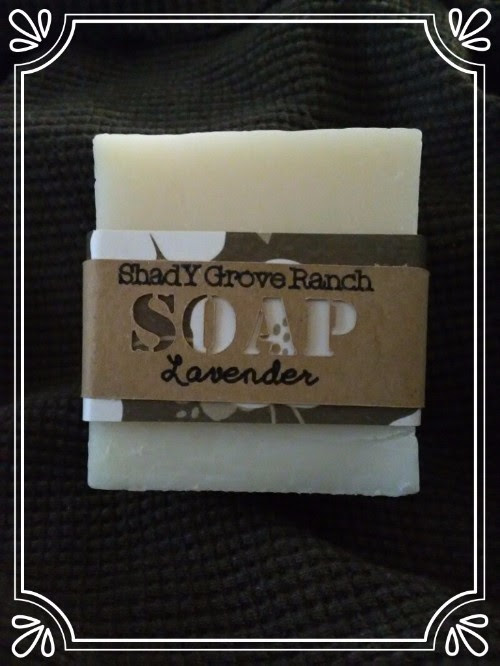Most of our cows don’t have real names anymore–truly, there are over 100 cows out there in the pasture, and most of them have a new baby every year, so it would be pretty tough to keep track of every single one! Matt knows a lot of them by number and will report in sometimes, “Boy, A07 is looking really good!” But the handful of cows that we started with all had names, chosen for personality quirks or looks or even just for fun.
We have this one cow named Tilly. She’s feisty and does not put up with farm dogs, so we figure she’d be pretty good at defending the herd if needed. We named her after a favorite movie character in a movie called “Guess Who’s Coming To Dinner.”
Tilly was one of the first cows we bought to stock Shady Grove Ranch, and when she finally had her first calf, it disappeared down in the West Pasture, a distant paddock that is more wild and remote than the rest of the farm. Matt searched and searched for that calf. Pap Pap searched. I searched. Even Tilly searched after the herd moved up to a new area (rotational grazing and all). I remember her running up and down the fenceline, bellowing loudly, to no avail. After three days, we thought there was no hope, and that surely the coyotes or even a bobcat or cougar had carried it off. What could have got past Tilly, we didn’t know, but we were heartbroken. And then one day, out of nowhere, that calf appeared, bright-eyed and bushy-tailed, and has been with us ever since.
We named that calf (a female) Millie after another favorite movie character from “Seven Brides for Seven Brothers.” We hoped that the losing-your-calf trait was not genetic, but as it turns out, it is. We have a tricky time keeping calves with the herd in spring anyway, even before the Tilly-Millie trait, because calves are slow and sleepy for the first few days, and we have to move the cows daily to achieve “flash grazing.” Why not just leave the cows in one big pen until everyone’s done calving? Well, that would lead to poor management during the most nutritious grazing of the year, both for the cows and the land.
Instead we just try to keep up with who’s who (thus the ear tags!), checking frequently for new babies, scouring perimeters, and making sure new moms have been nursed on. Now, as we had already discovered years ago, the whole line of calves out of Tilly and her daughters just LOVE to disappear in the same way. Maybe their moms hide them. Who knows? We try not to worry too much now, but it’s hard not to.
Here’s how it goes: They’re born, we see them within the first 12 hours, then they fall asleep for three days in some tall grass at the edge of the woods someplace and we don’t see them again until they’re too fast to eartag. I guess they don’t like having name tags… It wouldn’t be so bad except that we really do rotate our cows daily, so after three days, they’ve covered a lot of ground, and that calf may or may not have made it with the rest of the herd! The weirdest part is this particular tendency seems to be isolated in this one line of cows–Tilly and her daughters! I suppose we’d cull them if they didn’t produce such nice, fat calves every year!
The kids and I decided to go blackberry picking one lovely Sunday afternoon while Matt did evening chores. In passing he said to me, “Millie’s calf is missing. Keep your ears open for a calf mooing.”

Tevka offered to pull the wagon… until she realized how huge Matt Jr. has gotten!

The 3 Musketeers, aka the 3 Berry-Pickers!
Oh boy. Good ol’ Millie loses another calf. Sure enough, about the fourth berry I put into my basket, I heard a little baby moo. I hushed the kids because I wasn’t totally confident of what I had heard or where it had come from. Yes, I heard it again! It had come from the very paddock that Matt suspected, which the herd had left behind some two days before.
I gave instructions to the kiddos to stay in the berry patch and keep feeding the baby berries (he loves those!) while I went to investigate.

Matthew got really excited when I set the berry basket right next to him!

My little berry-lover!

I don’t think there’s much in this world that is cuter than a baby stuffing his face full of blackberries!
I walked quickly, watching and listening to try to put eyes on the calf. I didn’t know whether he’d be standing or lying down, in the woods, or in the fields or brambles. I stopped to listen. Another baby moo!
I sped up and headed toward where the sound had come from. I rounded a tall bramble bush, and there, in the midst of a blackberry patch, was our missing calf!
I was between him and the herd. Calves are particularly difficult to “steer” by pressure because they don’t always go in a predictable direction. So, giving him plenty of berth, I jogged around behind him to prepare to chase him up the hill.
We had a long way to go and a wide open field to cover that was filled with random patches of brambles and downed trees waiting to be milled into lumber for our farm store. Thankfully the calf headed the right way, so I ran behind watching to see what he would do. He passed the open gate, so I went top speed to try to head him off and send him back to the gate. This part would be tricky because if he didn’t turn left, he’d end up in another 20 acre paddock, and you know, I just didn’t want to run across 20 acres on my day off! I’ve never been much of a runner!
Suddenly the calf decided to go left, and he bolted right through the electric smooth-wire fence! He got shocked a couple of times getting through, but he made it and headed up past the house toward the other cows. What luck! There was only one more fence between him and his momma, but he needed to head toward it and not veer right along the house and up the driveway back toward that 20-acre open paddock.
I leaped over old garden rows and weeds and caught up with him. He scrambled forward and, yes! Ran right through the fence into the cows’ paddock.

He finally made his way back into the right paddock–now he’s trying to spot his momma!
It had been a couple of days since he nursed, so he latched on to the first momma cow he encountered, and she took a sniff of him and tried to kick him off since he didn’t belong to her. By then Matt had made it back to us and helped steer him back toward his momma, who was rather shocked by his eagerness to feed (and probably by her soreness from not having been nursed for 2 days!).
I went back to my own kids who were still happily munching on berries. During my calf-chase, I had spotted an excellent climbing tree, so we ventured out to that so that the kids could climb, and Momma could catch her breath. Farming sure keeps us young! Thanks for the exercise, Millie!

A lovely natural playground where I could catch my breath!











